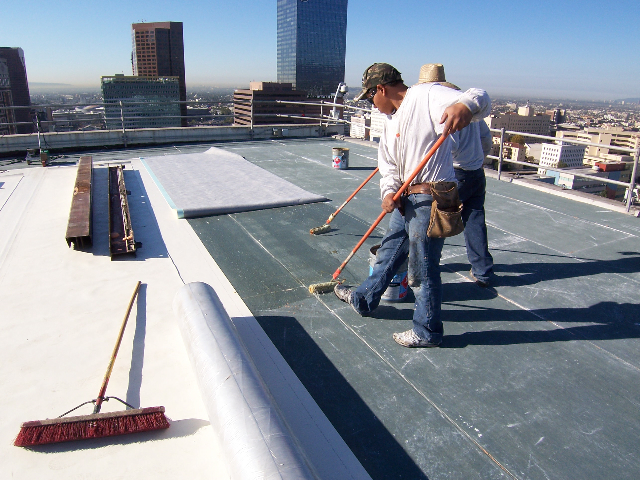In today’s environment, eco-consciousness is no longer just a fad; it’s a crucial need. As homeowners evolve increasingly aware of their ecological impact, the roofing industry is transforming to meet these demands with creative and green solutions. From living roofing options to sustainable materials, the choices for roofing are growing, making it easier than ever to integrate upgrades with eco-friendly practices.
In your journey through this changing landscape, understanding key aspects of roofing is essential. Whether you are wondering how to know when it’s the right moment for a new roof, aiming to differentiate between DIY repairs and hiring a specialist, or evaluating the numerous roofing materials available, having knowledge is crucial. In this piece, we will explore the latest trends in roofing technology, discuss how to handle common roofing issues, and offer guidance into making sustainable options that will benefit both your home and the planet.
Roofing Replacement Essentials
When consider replacing your roof, the initial step is recognizing when it’s time for your roof needs care. Property owners should be aware of the indicators that show it’s time for a new roof, including absent shingles, major leaks, or severe wear. Regular inspections assist spot these issues early, which allows for timely interventions and potentially avoiding a complete replacement.
Selecting the appropriate materials is crucial for ensuring durability and sustainability. Options include traditional asphalt shingles, eco-friendly alternatives like metal or tile roofing, and cutting-edge solutions like green roofs. Each material has its own lifespan, costs, and aesthetic benefits, therefore evaluating them in relation to your specific needs and the design of your home is important in this decision process.
The roof replacement process can be daunting, but knowing what to expect can ease the transition. Property owners should get ready for the disruption that comes with installation, which includes noise and access to their property. It’s recommended to hire a reputable contractor who will provide a detailed overview of the project timeline, costs associated, and necessary permits. Proper communication and planning can significantly enhance the entire process.
Frequent Roof Problems and Remedies

One of the frequent typical challenges homeowners face is roof leaks, which can lead to substantial damage if not handled quickly. Typical causes of leaks include broken shingles, faulty flashing, and wear around vents. To resolve leaks, it's essential to pinpoint the source correctly. web can inspect their roofs for missing shingles and ensure that flashing is securely in place. Routine maintenance and timely repairs can mitigate leaks from causing more issues.
An additional issue is the buildup of debris, especially in the valleys and gutters of the roof. Leaves, branches, and other debris can trap water and promote mold growth, leading to structural problems. Homeowners should routinely clean their gutters and roof surfaces to ensure proper drainage and minimize water pooling. Additionally, installing gutter guards can help lessen debris accumulation, making maintenance easier in the long run.
Severe weather poses a further challenge for roofs, causing damage from high winds, hail, or heavy snow. Householders can protect their roofs by ensuring proper installation that meets local building codes and includes features designed for weather resistance. In regions susceptible to hurricanes or heavy snowfall, picking appropriate materials and integrating preventative measures, such as storm-resistant shingles, can greatly boost a roof's resilience. Frequent inspections after harsh weather events are crucial for early detection of any storm-related damage.
Eco-friendly Roof Practices
The push towards eco-friendliness is reshaping the roofing industry, with property owners increasingly seeking sustainable alternatives and materials. Vegetative roofing, for example, has gained popularity as it promotes biodiversity, improves energy efficiency, and reduces stormwater runoff. Local roofers Kearney NE feature native plants and flora, which deliver natural insulation and can lessen urban heat island effects. As knowledge of environmental issues grows, this trend is likely to flourish, encouraging more homeowners to explore sustainable options.
Another significant trend is the adoption of solar paneling technologies. Solar shingles are becoming a practical alternative to traditional rooftop materials, integrating solar energy harvesting directly into the roof. This development not only helps in lowering electricity bills but also helps to lowering one's carbon footprint. As progress in solar technology continue to boost efficiency and aesthetics, more residents may view solar solutions an appealing investment for sustainable living.
Finally, the emphasis on energy-efficient roofing materials is on the upswing. Homeowners are choosing materials with high thermal resistance, such as reflective roofing choices, that deflect more sunlight and absorb less heat. This selection not only improves comfort but also assists in minimizing cooling costs during hot months. With an growing variety of sustainable roofing materials available, including recycled content options and responsibly sourced wood, residents can make wise decisions that correspond with their environmental values while enhancing their home's effectiveness.
